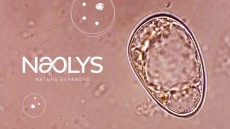'Hotspots': Coty sets independently approved climate targets
![Coty has focused its future sustainability actions around key 'hotspots' in its business model [Getty Images]](/var/wrbm_gb_food_pharma/storage/images/_aliases/wrbm_large/publications/cosmetics/cosmeticsdesign.com/article/2022/12/12/coty-publishes-sustainability-report-setting-science-based-targets-in-energy-use-carbon-footprint-and-packaging/16016546-1-eng-GB/Coty-publishes-sustainability-report-setting-science-based-targets-in-energy-use-carbon-footprint-and-packaging.jpg)
In its third annual Sustainability Report, international beauty major Coty published new Science Based Target Initiative (SBTi) approved near-term targets for reducing its carbon footprint. These include pledges to reduce scope 1 and 2 greenhouse gas (GHG) emissions by 50% and scope 3 emissions by 28% by 2030, against a 2019 baseline. The beauty group has also promised stakeholders that by 2030, 100% of its electricity will come from renewable sources and that it will have lowered its energy consumption by 20% versus 2019 levels.
Guided by the new SBTi targets, Coty said it would continue to reduce its climate footprint focusing on three hotspots - product impact, transportation and the impact of its own operations - as well as its energy consumption over the next few years.
“Through action across our value chain, including our own operations and those of our suppliers, we will work to enhance monitoring and minimize our emissions,” said Coty in the report.
Hitting the hotspots: cutting energy usage and targeting 100% renewables
With energy consumption a “critical part” of its climate strategy, Coty explained that the ‘operations hotspot’ would focus on reducing the amount of energy consumed in its own operations and transitioning to more renewable energy.
During the 2022 financial year, Coty reduced energy consumption by 12.8% compared to its 2019 calendar year baseline through initiatives such as automation and installation of energy-efficient fixtures in its factories. These included automatic scheduling and weekend shutdowns as well as the installation of LED lights and motion sensors.
As an example, at its distribution centre in Bournemouth, UK, Coty said it achieved significant energy reductions by implementing automatic breaks in the conveyor system for picking and packing customer orders.
To reach its 2030 target of 20% less energy consumption, Coty said all supply chain sites had roadmaps in place for reducing electricity and fuel usage.
The company reported that it had already exceeded its 2030 target for halving scope 1 and 2 emissions, following a move in 2021 to renewable electricity across all Coty factories and distribution centers.
“With the work completed to transition our supply chain sites to renewable electricity, we have achieved our commitment to reduce our combined scopes 1 and 2 emissions by 50% by 2030,” wrote the company.
Although proud of this achievement, Coty said it recognized the need to be more ambitious towards 2030 and would be evaluating its next steps.
Coty reported that 91% of its current electricity usage was from renewable sources. To reach its 100% renewable target, the company said it was investigating alternative sources of energy, including on-site solar panels and biomass boilers. Four of its sites already have solar arrays installed to produce electricity, while another site uses solar energy for water heating.
New packaging targets
Coty said its ‘product hotspot’ would focus on reducing the carbon impact of its raw materials and packaging. To this end, the company had introduced new packaging targets, including a goal to reduce total packaging by 20% by 2030 versus its calendar year 2019 baseline.
“We measure this across Coty, aiming for an average weight reduction of 20% in packaging gram per milliliter of product manufactured. This means making decisions on design and composition to decrease the weight of packaging and reduce unnecessary packaging as much as possible, whilst ensuring that safety and performance is not compromised,” said the company.
Increasing the amount of recycled content in its packaging to at least 30% by 2030 and ensuring that 100% of its folding box boards were FSC- or PEFC-certified by 2025 were two further new packaging targets cited in the report.
Demonstrating how it was working towards these targets, Coty said that during the 2022 financial year, Adidas had prioritised the use of post-consumer recycled content (PCR) in the relaunch of its shower gels - the refreshed bottle was made from 99.8% PCR. Adidas also launched a new Active Skin & Mind range of shower gels, featuring Coty’s first refillable body care solutions and carrying 18% less packaging weight than the brand’s original baseline body care range.
With regard to formulas, the company said its work around green science and eco-design, such as the replacement of D5 (cyclopentasiloxane), would be essential to reducing its environmental impact. For example, since June 2022, a new technology that blends synthetic and natural raw materials has been used in the company’s deodorant portfolio as a substitute for D5 silicone.
Driving carbon reductions through transportation monitoring
After raw materials and packaging, Coty said its next biggest hotspot was the impact of its upstream and downstream transportation categories.
It said that its EcoTransit tool enabled monitoring of all downstream transportation paid for by Coty and that it was continuing to refine this methodology in order to further its reporting.
“We have identified different actions to reduce our transportation impact, including the reduction of air freight, one of our most impactful actions,” said Coty.
Looking ahead, Coty said it would work to address wider scope 3 emissions, which would now become a “central focus”.
Besides climate action, Coty’s ‘Beauty that lasts’ sustainability strategy encompassed programs to reduce waste, deliver on gender equity and ensure ingredients such as palm oil and mica are sourced responsibly.
Earlier this year, Coty kickstarted production of fragrances made using carbon-captured ethanol in Spain - a project it developed in partnership with recycling specialist LanzaTech. The goal was to use carbon-captured ethanol in the majority of its fragrances by next year.



![Coty Inc says e-commerce will be crucial in the South East Asian market. [Coty / Chloé Fragrances]](/var/wrbm_gb_food_pharma/storage/images/_aliases/wrbm_medium/publications/cosmetics/cosmeticsdesign-asia.com/headlines/business-financial/coty-touts-e-commerce-as-strategic-growth-pillar-for-sea-fragrance-ambitions/15518165-1-eng-GB/Coty-touts-e-commerce-as-strategic-growth-pillar-for-SEA-fragrance-ambitions.jpg)





![Indus Valley is working to corner 30% of India's online premium boxed hair colour market. [Indus Valley]](/var/wrbm_gb_food_pharma/storage/images/_aliases/wrbm_tiny/publications/cosmetics/cosmeticsdesign-asia.com/article/2024/07/26/indus-valley-aims-to-secure-30-of-india-s-online-premium-hair-colour-market-with-organic-offerings/17594932-5-eng-GB/Indus-Valley-aims-to-secure-30-of-India-s-online-premium-hair-colour-market-with-organic-offerings.jpg)
![[Getty Images]](/var/wrbm_gb_food_pharma/storage/images/_aliases/wrbm_tiny/publications/cosmetics/cosmeticsdesign-asia.com/china/china-focus-latest-developments-in-china-s-booming-beauty-market25/17606695-1-eng-GB/China-focus-Latest-developments-in-China-s-booming-beauty-market.jpg)
![Kosé has launched makeup brand Visée in Singapore as part of plans to reinforce its position in SEA. [Visée]](/var/wrbm_gb_food_pharma/storage/images/_aliases/wrbm_tiny/publications/cosmetics/cosmeticsdesign-asia.com/headlines/business-financial/visee-singapore-kose-aims-to-enhance-brand-visibility-in-sea-with-new-launch/17587264-1-eng-GB/Visee-Singapore-Kose-aims-to-enhance-brand-visibility-in-SEA-with-new-launch.jpg)
![ble C&C is set on reinforcing its competitiveness in China’s beauty market. [Missha]](/var/wrbm_gb_food_pharma/storage/images/_aliases/wrbm_tiny/publications/cosmetics/cosmeticsdesign-asia.com/headlines/business-financial/able-c-c-aims-to-strengthen-competitiveness-in-china-through-online-expansion-kol-collabs/17591626-1-eng-GB/Able-C-C-aims-to-strengthen-competitiveness-in-China-through-online-expansion-KOL-collabs.jpg)

![LG H&H genetic study says 23 genetic regions affect natural skin tone. [Getty Images]](/var/wrbm_gb_food_pharma/storage/images/_aliases/wrbm_tiny/publications/cosmetics/cosmeticsdesign-asia.com/article/2024/07/23/lg-h-h-discovery-of-genetic-skin-tone-factors-in-east-asians-potentially-key-to-skin-radiance-developments/17587210-1-eng-GB/LG-H-H-discovery-of-genetic-skin-tone-factors-in-East-Asians-potentially-key-to-skin-radiance-developments.jpg)

![DR.CI:LABO expects brand-supplier partnerships gain more public prominence as consumers interest in skin care grows online. [Dr.Ci:Labo]](/var/wrbm_gb_food_pharma/storage/images/_aliases/wrbm_tiny/publications/cosmetics/cosmeticsdesign-asia.com/article/2024/07/22/brand-supplier-partnerships-will-come-to-the-fore-amid-the-online-skin-care-landscape-dr.ci-labo/17576755-1-eng-GB/Brand-supplier-partnerships-will-come-to-the-fore-amid-the-online-skin-care-landscape-DR.CI-LABO.png)


